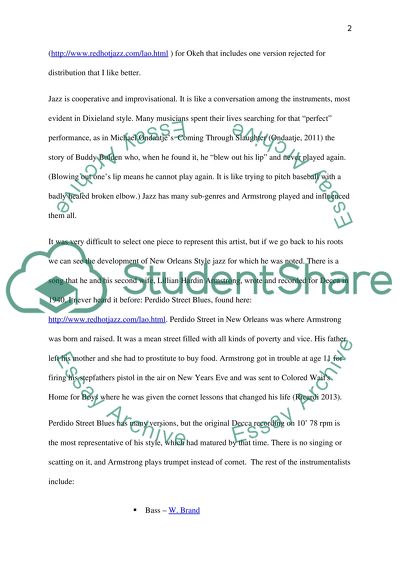Louis Armstrong: The Jazzman Essay Example | Topics and Well Written Essays - 750 words. Retrieved from https://studentshare.org/music/1495144-louis-armstrong-the-jazzman
Louis Armstrong: The Jazzman Essay Example | Topics and Well Written Essays - 750 Words. https://studentshare.org/music/1495144-louis-armstrong-the-jazzman.


